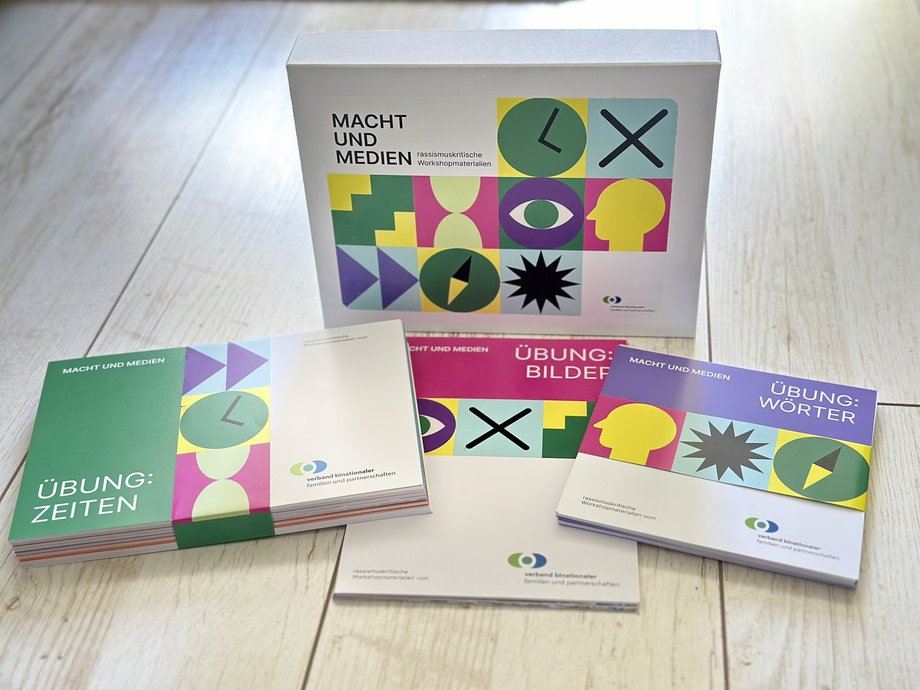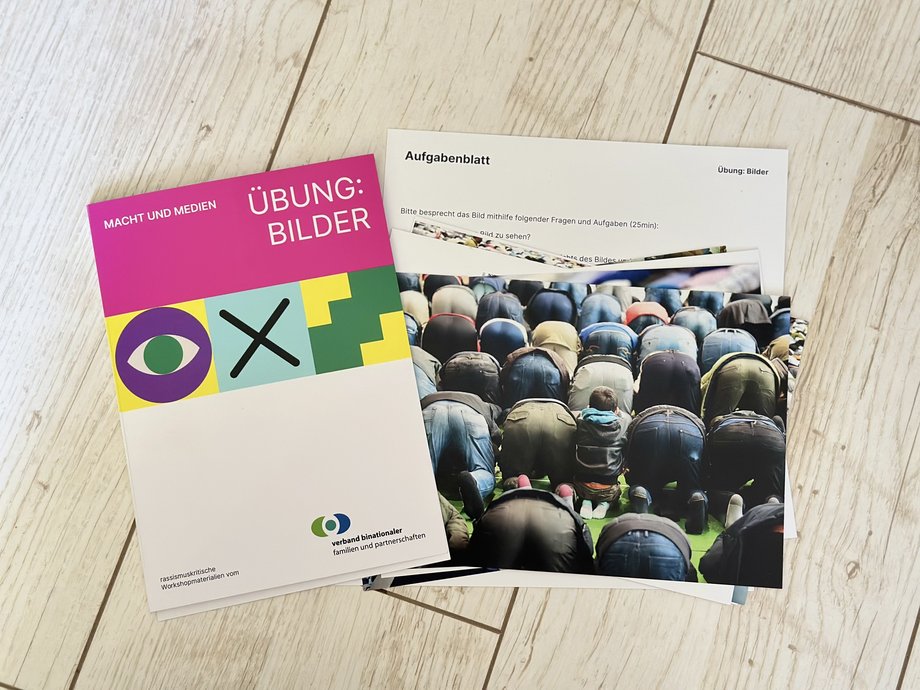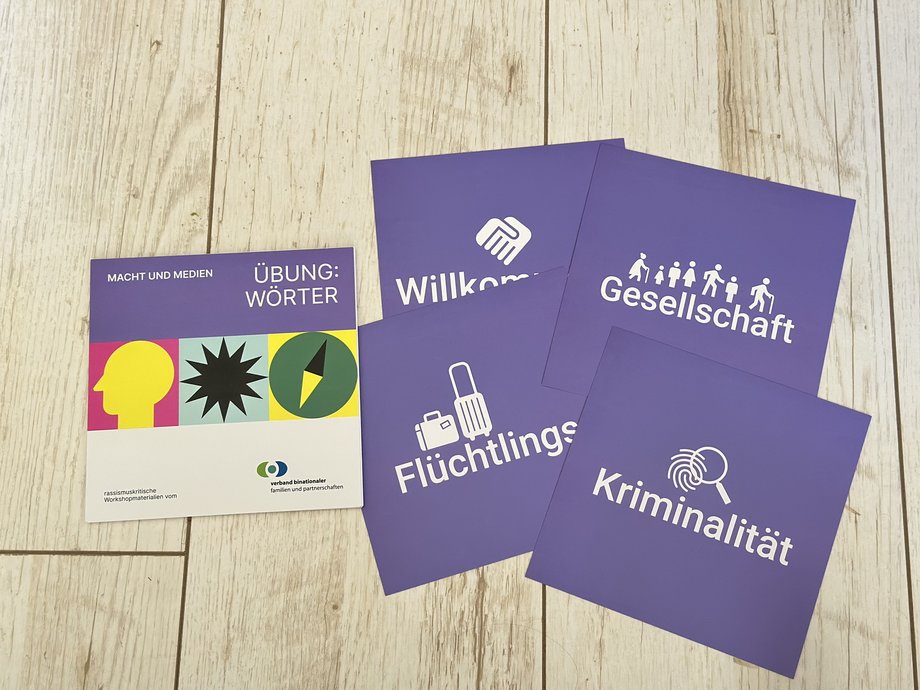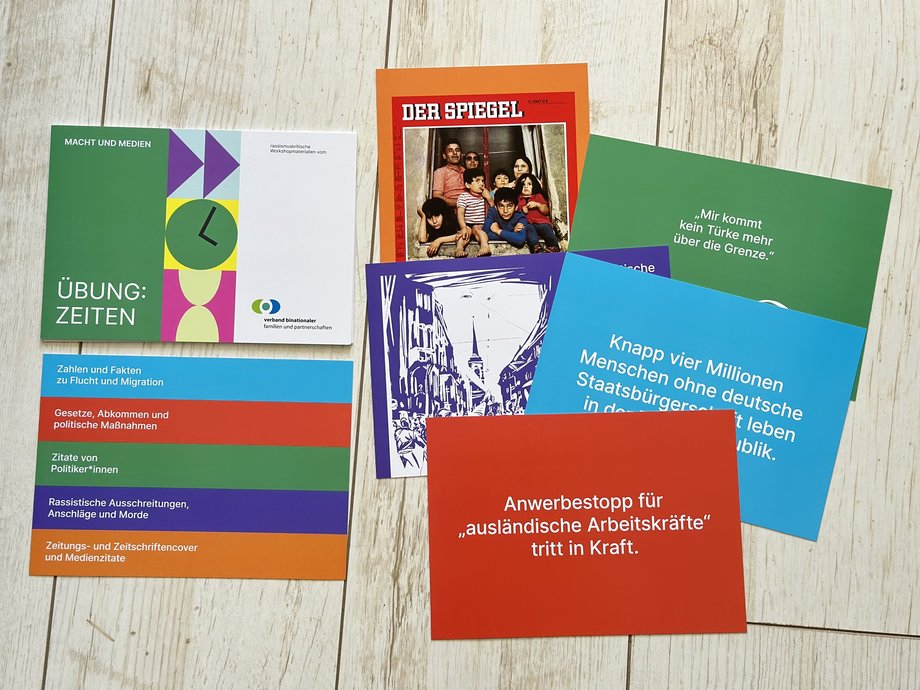Power and the media Workshop materials critical of racism
Anti-Muslim racism pervades our society. Recurring discourses about "the Muslims" and "Islam" reinforce stereotypical images of "the Muslim other", while media transport in the form of words or images can create or perpetuate thought structures that reinforce prejudices and stereotypes in society towards the other. Understanding the interplay between power and the media and scrutinising it from a racism-critical perspective is therefore the aim of the material box "Power and the media". Sensitising people to the construction of "the Muslim other" and the mechanisms of change is the focus of the material box.
We would like to take this opportunity to express our special thanks to the Association of Binational Families and Partnerships Leipzig, which provided us with a copy of the material box free of charge. The material is part of ourSensitivity to Discrimination box, but can also be borrowed individually.
Number of participants
6 to 12
Duration
60-90 minutes
Space
Four rooms for small group work, space on the walls for flipchart papers, space to lay out a timeline (approx. 6 metres long)
Additional material required
Four flipchart papers, four moderation pens, adhesive tape, four copies of the task sheet, approx. 6 metre long rope or masking tape
Set-up and procedure
The material box "Power and Media" consists of three exercises, each of which focusses on different aspects of anti-Muslim racism.
Pictures exercise:
This method uses a selection of images to encourage a critical examination of media portrayals of Muslims that are critical of racism. Participants develop an understanding of how media can suggest a deficit-oriented and homogenising view of Muslims and those marked as Muslim through stereotypical representations and problematising textual embedding.
Exercise words:
This method offers participants the opportunity to take a closer look at the language used in media reporting. Participants scrutinise how changing language is (re)produced in the media and which messages and meanings are conveyed by certain constructions of terms.
Exercise times:
This method uses a selection of facts, figures, events and examples of media coverage to provide stimuli for a critical analysis of racism at important junctures in migration society from 1970 to the present day. Participants use the exercise to develop a feeling for racist conjunctures and continuities.




